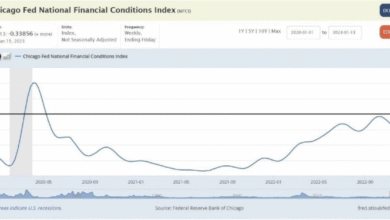Iran Nuclear Deal: Trump Administration Explores $30 Billion Proposal

The Iran nuclear deal has been a pivotal subject in international relations, particularly following the Trump administration’s shift in policy toward Iran. This proposed agreement aims to offer Iran significant sanctions relief in exchange for curbing its uranium enrichment activities. Under this plan, Iran could potentially receive up to $30 billion for enhancing its civilian nuclear program, representing a notable departure from the previous U.S.-Iran nuclear agreement established under President Obama. The discussions surrounding this deal reflect the complexities of U.S. foreign policy as it navigates the delicate balance between negotiations and geopolitical tensions in the Middle East. As President Trump weighs the implications of this approach, the future of U.S.-Iran relations hangs in the balance, with potential economic incentives igniting fierce debate both domestically and abroad.
The proposed nuclear agreement with Iran highlights the ongoing dialogue regarding international nuclear nonproliferation and energy cooperation. As the Trump administration explores potential economic incentives, the focus shifts to how the U.S. might engage with Tehran on its nuclear ambitions while addressing safety concerns about its civilian nuclear program. This initiative could mark a transformative moment in U.S. diplomatic efforts, representing a potential easing of long-standing Iran sanctions. The broader implications of such discussions impact not just regional stability but also inform global perspectives on U.S. foreign policy. As negotiations evolve, the challenge remains to ensure that any relief does not embolden what some perceive as destabilizing actions by the Iranian regime.
Examining Trump’s Shift on Iran’s Nuclear Program
The Trump administration’s recent consideration of a potential $30 billion civilian nuclear deal for Iran marks a significant pivot from its previous foreign policy stance. Following the U.S. withdrawal from the Obama-era nuclear agreement in 2018, President Trump has maintained a hardline approach against the Iranian regime, focusing on stringent sanctions and the limitation of its nuclear ambitions. However, the renewed dialogue around this proposed deal indicates a possible shift towards more diplomatic strategies, aimed at incentivizing Iran to halt its uranium enrichment activities. This contrast highlights the complexities within U.S. foreign policy, particularly in relation to Iran’s nuclear capabilities and regional influence.
The discussions around sanctions relief for Iran, coupled with the tangible financial aid associated with the civilian nuclear program, pose fundamental questions about U.S. strategic interests in the Middle East. While some advisors in the administration see merit in this deal for promoting regional stability, others remain skeptical about enabling Iran’s financial recovery. These internal debates reflect broader concerns regarding Iran’s use of funds for activities perceived as destabilizing to its neighbors and a threat to U.S. allies, particularly Israel. Thus, the potential deal embodies not just a financial transaction, but a complex negotiation of geopolitical interests.
Impact of Sanctions Relief on Iran’s Civilian Nuclear Capability
The prospect of sanctions relief as part of the new proposal to aid Iran’s civilian nuclear program raises critical considerations both for U.S. foreign policy and international diplomatic relations. By potentially allowing Iran access to frozen assets and substantial investment for its nuclear infrastructure, the administration aims to create leverage over Tehran, compelling it to adhere to limits on its nuclear activities. However, critics argue that any form of sanctions relief might empower the Iranian regime, enabling it to reinvest in military endeavors or regional interventions that undermine stability.
Additionally, the notion of assisting Iran in developing a civilian nuclear program presents a paradox for U.S. foreign policy. On one hand, it could foster a cooperative approach promoting peaceful nuclear energy, thereby reducing tensions over military nuclear ambitions. Conversely, it risks causing friction with other nations wary of Iran’s motives and capabilities. The delicate balance of promoting civilian nuclear interests while ensuring that they do not transmute into weapons capabilities is a tightrope that U.S. policymakers must navigate carefully.
Uncertainties Surrounding Trump’s Proposal for Iran Sanctions Relief and Nuclear Deal Negotiations California
With President Trump having previously dismissed any notion of sanctions relief in light of recent Iranian assertiveness, the path forward remains fraught with complexities. His public outbursts on platforms like Truth Social illustrate a volatile blend of diplomacy and defiance that characterizes his approach to international relations. The challenge for the administration is to engage Iran in productive dialogue without conceding too much ground, particularly following Khamenei’s provocations. Recent assertions from the Iranian leadership about perceived military victories and challenges to U.S. influence add to the intricate dynamics at play.
As talks progress, the climate surrounding the negotiations will also be influenced by domestic and international reactions to any concessions made by the U.S. Should the administration move forward with sanctions relief as part of the nuclear deal negotiation, it could trigger backlash from both Republican critics who argue that it rewards Iranian aggression, and from allies in the region who feel threatened by the implications of a strengthened Iran. Thus, the administration is walking a fine line, attempting to manage expectations at home while also seeking a resolution that reinforces U.S. interests abroad.
How the Trump Administration Plans to Navigate Iran Negotiations
Navigating negotiations with Iran has become increasingly intricate for the Trump administration, particularly in light of fluctuating rhetoric from both U.S. officials and Iranian leaders. The strategic pivot towards considering economic incentives is an attempt to construct a diplomatic framework that could elicit compliance from Iran without fully relinquishing the leverage provided by sanctions. While Trump has publicly questioned the viability of a deal in the face of provocations from Iranian leadership, he also hints at a desire for negotiations, framing it as an opportunity for both nations to find common ground.
Furthermore, the administration’s approach would need to be carefully calibrated against the backdrop of international alliances and domestic political pressures. Key stakeholders, including American allies in Europe and the Middle East, will likely have a significant say in how negotiations progress. A robust engagement strategy may also necessitate addressing concerns surrounding Iran’s support of regional militias and nuclear aspirations beyond civilian energy needs. Hence, the political landscape for these negotiations is incredibly multifaceted, requiring deft handling to align various interests without undermining the overarching goal of stabilizing the Middle East.
The Role of Regional Powers in Iran’s Nuclear Negotiations
Regional powers play a critical role in shaping the context and outcomes of the negotiations between the U.S. and Iran. Countries like Israel and Saudi Arabia, which perceive Iran as a direct threat to their national security, have been vocal in their opposition to any form of sanctions relief that might bolster the Iranian regime’s nuclear capability, even for civilian purposes. Their influence cannot be overlooked when considering the implications of any potential agreement that emerges from these negotiations. These nations often lobby for stricter measures, underscoring their apprehension about Iran’s long-term intentions.
Moreover, the involvement of regional allies in discussions about Iran’s civilian nuclear program could pave the way for collaborative frameworks that preemptively address fears surrounding the proliferation of nuclear weapons. If, for instance, neighboring states agree on protocols regarding nuclear transparency and mutual inspections, it could bolster the legitimacy of the U.S. negotiations. Ultimately, the Trump administration’s ability to engage regional powers effectively will be pivotal in charting a course that not only answers immediate diplomatic challenges but also fosters a more enduring peace in the region.
The Future of U.S.-Iran Relations Amid Uncertainty
Looking ahead, the future of U.S.-Iran relations remains laden with uncertainty, especially in light of fluctuating domestic and international political landscapes. The exploration of a civilian nuclear deal could set a precedent for how the U.S. approaches adversarial nations willing to engage in negotiations. However, skepticism persists, particularly with Trump’s track record of oscillating between hardline stances and offers of dialogue. Success in these negotiations would require a consistent strategy, balancing the necessary hardline approach with the willingness to explore economic incentives.
Moreover, any progress towards normalizing relations will depend on Iran’s responsiveness to U.S. overtures and its commitment to genuinely curbing nuclear developments. It presents a high-stakes scenario where failure to achieve a diplomatic resolution could reignite tensions, leading to heightened sanctions or military engagements. Therefore, the overarching challenge will be crafting a foreign policy that navigates between deterrence and diplomacy, seeking to instill stability without capitulating to Iranian assertiveness.
Evaluating the Risks of a Nuclear Agreement with Iran
The potential risks associated with entering into a new nuclear agreement with Iran are manifold and require comprehensive evaluation. Critics argue that any arrangements permitting Iran to access nuclear technology could inadvertently facilitate the development of military capabilities under the guise of a civilian nuclear program. The lessons learned from the prior Iran nuclear deal reveal the complexities of monitoring compliance and regulating the dual-use nature of nuclear technology. The Trump administration must tread carefully, utilizing stringent verification measures to ensure that any compromise does not compromise regional stability.
Additionally, the geopolitical ramifications of such a deal extend beyond Iran and the U.S. The possibility of a renewed nuclear agreement could catalyze an arms race in the Middle East, as neighboring states may feel compelled to enhance their military capabilities in response. The administration will need to balance its negotiations with Iran while reassuring allies that U.S. commitments to their security remain steadfast. Ultimately, navigating these risks will require acute diplomatic sensitivity and foresight to avert any potential escalations stemming from perceived inequities within the negotiation framework.
Factors Influencing Sanctions Relief Decisions in Iran Negotiations
The consideration of sanctions relief within the context of the Iran nuclear negotiations is influenced by several intersecting factors, ranging from domestic political pressures in the U.S. to international diplomatic relations. The Trump administration is acutely aware that any concessions made could arouse significant backlash from both Congress and U.S. allies, particularly those who view sanctions as instrumental in curtailing Iran’s regional ambitions. The interplay between the desire for diplomatic solutions and the necessity of maintaining a tough stance against Iranian aggressions creates a convoluted environment for decision-making.
Additionally, the assessments of Iran’s nuclear capabilities and the potential steps it may take in response to sanctions relief are critical in shaping the administration’s approach. Ensuring that any negotiations ultimately lead to a de-escalation of tensions will require nuanced understanding and careful consideration of Iran’s motivations. The decisions made in these discussions will either pave the way for renewed diplomatic relations or further entrench the adversarial dynamics between the two nations, highlighting the need for thoughtful and strategic negotiation tactics.
Long-Term Implications of Trump’s Nuclear Policy Shift on Iran
The long-term implications of President Trump’s consideration of a civilian nuclear deal with Iran could significantly redefine U.S. foreign policy in the region and alter the foundational approach to international nuclear agreements. Should this negotiation yield a successful outcome, it might pave the way for future diplomatic engagements with other nations previously viewed as adversaries. Conversely, should the deal falter, it could entrench divisions and strengthen hardline factions within both the U.S. and Iranian political landscapes, confirming a return to antagonism and increased military posturing.
Moreover, the broader geopolitical landscape in the Middle East could be reshaped by how this potential deal unfolds. The stakes of sanction relief are not merely about Iran but extend to how neighboring states react and adapt to a potentially strengthened Iran. The ramifications of these negotiations could have cascading effects on regional security alliances, counterterrorism efforts, and economic stability, making it crucial for the administration to approach these discussions with a mentality aimed at establishing sustainable peace rather than temporary solutions.
Frequently Asked Questions
What is the current status of the Iran nuclear deal under the Trump administration?
The Trump administration has pivoted away from the Iran nuclear deal established by the Obama administration, which it exited in 2018. Currently, the administration is exploring a $30 billion civilian nuclear deal with Iran, potentially offering economic incentives in exchange for halting uranium enrichment.
How does the Trump administration’s approach to the Iran nuclear deal differ from the Obama administration’s?
The Trump administration’s approach contrasts sharply with the Obama administration’s by seeking to impose stricter sanctions and withdrawing from the nuclear agreement. Now, discussions are underway regarding possible sanctions relief, indicating a significant shift in U.S. foreign policy towards Iran.
What incentives are being discussed for Iran to halt its nuclear program?
One major proposal involves providing Iran with up to $30 billion for developing a civilian nuclear program, alongside unfreezing billions in Iranian assets. These incentives are part of a broader strategy to negotiate Iranian compliance with restrictions on uranium enrichment.
How might sanctions relief impact Iran’s economy and the nuclear agreement?
Sanctions relief could significantly boost Iran’s economy by providing access to frozen assets and foreign assistance for a civilian nuclear program. This relief could facilitate dialogue in the ongoing negotiations but is contingent on Iran’s compliance with the terms regarding its nuclear activities.
What was President Trump’s reaction to Iran’s Supreme Leader’s claims of victory against Israel?
President Trump reacted strongly to Supreme Leader Ayatollah Ali Khamenei’s declaration of victory over Israel, labeling it as a foolish lie. He warned that such announcements could jeopardize potential sanctions relief that was under consideration.
Are there any risks associated with the proposed $30 billion civilian nuclear deal for Iran?
Yes, potential risks include the possibility that financial aid could empower Iran’s nuclear ambitions rather than contain them, as critics argue it may provide the regime with resources to continue destabilizing activities in the region. Balancing sanctions relief while ensuring compliance with nuclear limits remains a contentious issue.
What are the implications of the Trump administration’s potential negotiations with Iran on U.S. foreign policy?
The potential negotiations mark a significant pivot in U.S. foreign policy, suggesting a willingness to engage diplomatically with Iran while balancing national security concerns. If successful, this approach might redefine relationships in the Middle East but could also provoke backlash domestically and internationally.
What is the significance of the Trump administration exploring economic incentives for Iran?
Exploring economic incentives represents a potential re-engagement strategy with Iran, contrasting starkly with previous sanctions-focused policies. This could pave the way for new diplomatic avenues, redefining how the U.S. handles nuclear proliferation and its relations in the region.
| Key Points |
|---|
| The Trump administration is exploring a $30 billion civilian nuclear deal for Iran, marking a significant policy shift after exiting the Obama nuclear agreement in 2018. |
| The potential deal includes economic incentives in exchange for halting uranium enrichment and unfreezing Iranian assets. |
| Trump has threatened to remove sanctions relief for Iran following comments from Supreme Leader Khamenei about victory over Israel. |
| Though negotiations are in discussion, Trump’s public remarks cast doubt on the feasibility and sincerity of the proposed deal. |
Summary
The Iran nuclear deal is a critical topic in international relations, evolving continuously with new proposals and diplomatic changes. The Trump administration’s consideration of a $30 billion civilian nuclear deal with Iran represents a pivotal shift from previous policies. Despite the complexities and delays surrounding the negotiations, including threats from Trump regarding sanctions relief, the interest in economic incentives suggests an opening for dialogue aimed at nuclear de-escalation.



